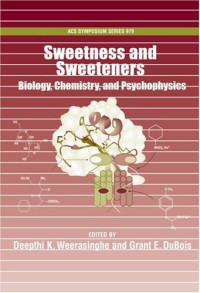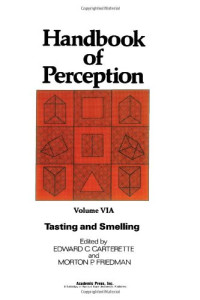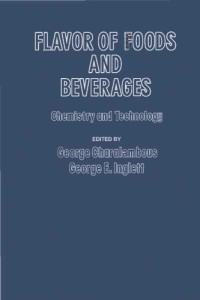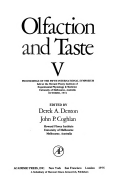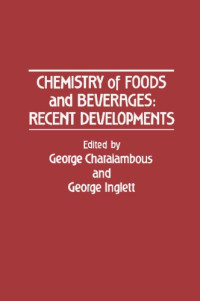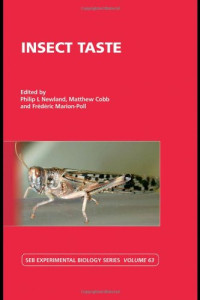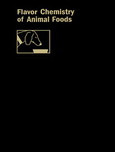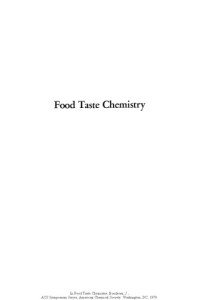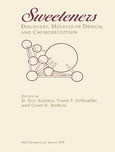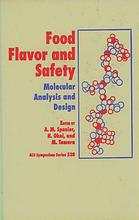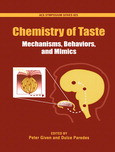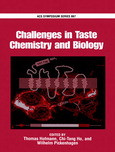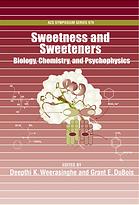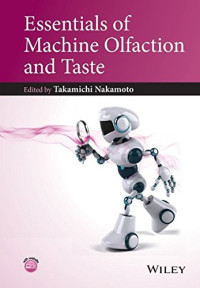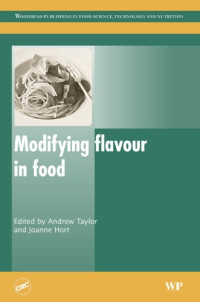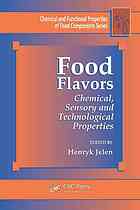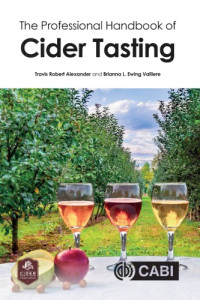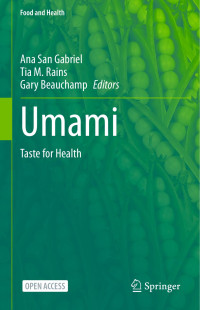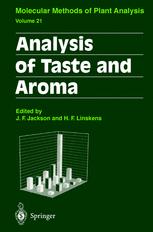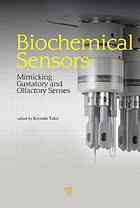
Modifying bitterness mechanism, ingredients, and applications
Roy, Glenn Michael
Only recently has bitterness control become of commercial importance to a food or pharmaceutical formulation chemist. Over the years, an increasing interest in more palatable food and beverage products with low fat and low sugar content has arisen, thus creating a market need for the control of bitterness perception. This is the first, comprehensive treatment of this subject in book form. Organized primarily by ingredients or processing approaches affecting the bitter taste reduction or inhibition, this thorough review includes an in-depth and thoroughly referenced review of mechanisms, ingredients and applications of bitter taste reduction or inhibition.;Preface -- Acknowledgement -- Introduction -- Section I: Mechanism, Ingredients, Applications -- 1. RECENT OVERVIEW OF THE MECH ANISM OF BITTER TASTE /GLENN ROY -- Transduction and Perception -- Rats and Mice -- Gerbils -- Bovine -- Rabbit -- Frog -- Primates and Humans -- References -- 2. GENER AL CORRELATION BETWEEN MODELS OF SWEETNESS AND BITTERNESS PERCEPTION /GLENN ROY -- Theoretical Studies -- Common Similarities, Experimental Data YI -- Sensory Measurements -- Case Studies -- References -- 3. THE EVOWTION OF IN VITRO TASTE SENSORS /GLENN ROY -- References -- 4. NEWER CHEMICAL IDENTIFICATION OF BITTER PRINCIPLES AND THEIR SOURCES /GLENN ROY -- Health Benefits -- Bitter as Deterrent -- Bitter Principles and Sources -- Miscellaneous Bitter Principles and Sources -- References -- 5. GENERAL INGREDIENT OR PROCESS APPROACHES TO BITTERNESS INHIBITION AND REDUCTION IN FOODS AND BEVERAGES /GLENN ROY -- Ingredient Approaches -- Process Approaches -- Inclusion Complexes, Chelating Agents, Polysaccharides and Ion-Exchange Membranes -- Chemical Modifications of Bitter Substrates -- Specific Applications of Bitterness Inhibition and Reduction -- References -- Section II: A Symposium -- 6. INTERACTIONS BETWEEN SWEET AND BITTER TASTES /D. ERIC WALTERS -- Introduction -- Experimental Observations -- Mechanistic Implications -- Practical Implications -- Conclusion -- References -- 7. FACTORS AFFECTING THE PERCEPTION OF BITTERNESS: A REVIEW /J. H. THORNGATE Ill -- Introduction -- Bitter Taste -- Receptor Events -- Innervation and Coding -- Bitterness Measurement -- Scalar Studies -- Temporal Studies -- Factors Affecting Bitterness Perception: Compound Effects -- Taste Interactions -- Medium of Presentation -- Viscosity -- Temperature -- Oral Chemical Irritants -- Ethanol -- Mode of Presentation -- Taste Modifiers -- Prop Status -- Salivary Status -- Age -- Conclusions -- Acknowledgements -- References -- 8. BITTERNESS PERCEPTION ACROSS THE LIFE SPAN /CLAIRE MURPHY and JILL RAZANI -- Taste T hreshold -- Suprathreshold Intensity -- Weber Ratios -- Chemosensory Preference -- Conclusion -- Acknowledgement -- References -- 9. SUPPRESSION OF BITTERNESS BY SODIUM: IMPLICATIONS FOR FLAVOR ENHANCEMENT /P.A. S. BRESLIN and G. K. BEAUCHAMP -- Introduction -- General Methods -- Results -- Discussion -- Summary -- Acknowledgements -- References -- 10. DEVELOPMENT OF A LOW-SODIUM SALT: A MODEL FOR BITTERNESS INHIBITION /ROBERT J. KURTZ and WILLIAM D. FULLER -- References -- 11. THE USE OF EXOPEPTIDASES IN BITTER TASTE MODIFICATION /GRAHAM BRUCE and DENISE PAWLETT -- Introduction -- The Nature of Bitterness -- Enzyme Selection -- Peptidases and Debittering -- Use of Peptidases to Debitter Protein Hydrolyzates -- Use of Peptidases to Prevent Bitterness in Cheese -- Summary -- References -- 12. SPECIFIC INHIBITOR FOR BITTER TASTE /YOSHIHISA KATSURAGI and KENZO KURIHARA -- Introduction -- Inhibition of Frog Taste Nerve Responses to Bitter Substances by the Lipoprotein -- High Adsorption A bility of Phosphatidic Acid-Containing -- Lipoproteins to Frog Tongue Surface and Hydrophobic Model Membranes -- Selective Inhibition of Bitter Taste in Humans by Phosphatidic Acid-Containing Lipoprotein -- Inhibition of Bitter Taste in Humans by Phosphatidic Acid -- Summary and Concluding Remarks -- References -- Section III: Applications in Oral Pharmaceuticals -- 13. GENERAL INGREDIENT OR PROCESS APPROACHES TO BITTERNESS INHIBITION AND REDUCTION IN ORAL PHARMACEUTICALS /GLENN ROY -- Introduction -- Sweeteners, Flavors and Amino Acids -- Lipids -- Lecithin-Like Substances -- Surfactants -- Coatings and Complexes with Carbohydrates, Resins, Proteins and Zeolites -- Carbohydrates -- Proteins -- Inclusion Complexes -- Resins -- Zeolites -- Salt Preparation -- Functional Group Alteration -- References -- 14. CAUTIONS AND PROSPECTS IN TASTE-MASKING FORMULATIONS /GLENN ROY -- Applications that Need Commercialization of New Technologies and Additives -- References -- Index -- Editor's Biography.
카테고리:
년:
2020
출판사:
CRC Press
언어:
english
ISBN 10:
100307586X
ISBN 13:
9781003075868
파일:
PDF, 51.93 MB
IPFS:
,
english, 2020
 Amazon
Amazon  Barnes & Noble
Barnes & Noble  Bookshop.org
Bookshop.org  파일을 변환하실 수 있습니다
파일을 변환하실 수 있습니다  더 많은 검색 결과
더 많은 검색 결과 기타 혜택
기타 혜택 